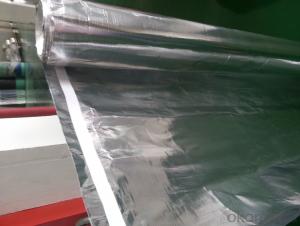When it comes to heating, ventilation, and air conditioning (HVAC) systems, one of the most critical components is the flexible duct connector. These connectors play a vital role in ensuring proper airflow within a building, which is essential for maintaining a comfortable and healthy indoor environment. However, many people overlook the importance of these connectors and the impact they can have on the overall performance of an HVAC system. In this article, we will explore the role of flexible duct connectors, the common issues that can arise, and how to ensure proper airflow for optimal HVAC performance.
The Importance of Flexible Duct Connectors
Flexible duct connectors are used to connect ductwork to various components of an HVAC system, such as air handlers, furnaces, and air conditioning units. They are designed to be flexible, allowing for easy installation and the ability to navigate around obstacles in the building. However, their flexibility can also be a double-edged sword, as it can lead to issues if not properly installed or maintained.
Common Issues with Flexible Duct Connectors
One of the most common issues with flexible duct connectors is improper sizing. If the connector is too small, it can restrict airflow and reduce the efficiency of the HVAC system. On the other hand, if the connector is too large, it can allow for excessive leakage, which can also negatively impact efficiency. Another common issue is the use of low-quality materials, which can lead to premature wear and tear or even failure of the connector.
Ensuring Proper Airflow
To ensure proper airflow and optimal HVAC performance, it is essential to follow some best practices when installing and maintaining flexible duct connectors. First and foremost, always use the correct size connector for the specific application. This may seem obvious, but it is surprising how often this simple step is overlooked. Additionally, make sure to use high-quality materials that are designed to withstand the demands of an HVAC system. Regular inspection and maintenance of the connectors can also help to identify and address any issues before they become more significant problems.
Personal Stories and Experiences
I remember a time when I was called to fix an HVAC system in a residential building. The occupants were complaining about poor airflow and inconsistent temperatures throughout the house. Upon inspection, I discovered that the flexible duct connectors were not only undersized but also made of low-quality materials. This was causing significant airflow restrictions and reducing the overall efficiency of the system. After replacing the connectors with the correct size and higher-quality materials, the system’s performance improved dramatically, and the occupants were much happier with their indoor environment.
The Emotional Impact of Proper Airflow
Having proper airflow is not just about the mechanical performance of an HVAC system; it also has a significant emotional impact on the occupants of a building. When the airflow is restricted or inconsistent, it can lead to feelings of discomfort, frustration, and even health issues such as allergies and respiratory problems. On the other hand, when the airflow is optimized, it can create a sense of comfort, satisfaction, and well-being.
The Role of Professional HVAC Technicians
Professional HVAC technicians play a crucial role in ensuring that flexible duct connectors are installed and maintained correctly. They have the expertise and experience to identify any issues with the connectors and recommend the appropriate solutions. Additionally, they can provide guidance on the best practices for maintaining the connectors to ensure optimal airflow and system performance.
Conclusion
In conclusion, flexible duct connectors are a critical component of any HVAC system, and their proper installation and maintenance are essential for ensuring proper airflow and optimal system performance. By following best practices, using high-quality materials, and working with professional HVAC technicians, you can ensure that your HVAC system provides a comfortable and healthy indoor environment for years to come.

